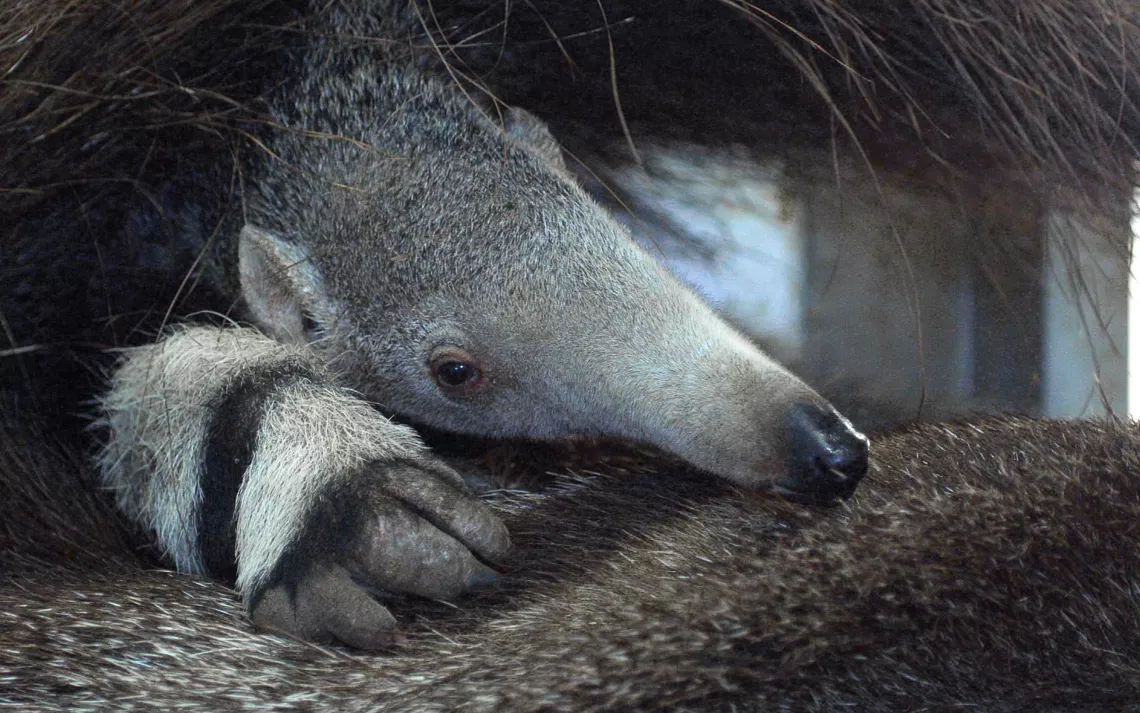"Baby Animals:" More Than Fluff
The second season of Smithsonian Earth’s cutest series connects us with wildlife

Photos courtesy of Smithsonian Earth
Just in time for some cozy Valentine’s Day viewing, Smithsonian Earth today is releasing its second season of Baby Animals.
Don’t be fooled by the title—the series isn’t all fluff, though there are plenty of fluffy critters to go around. Talking over footage of cuddly koalas and rambunctious reindeer, the narrator shares facts about each species, from quirky tidbits about wombats’ cube-shaped scat (spoiler alert: the more stackable it is, the better the territorial wombats can mark their burrows) to thorough deconstructions of the conservation efforts around rare creatures such as the eastern quoll, a polka-dotted marsupial found only in Tasmania. Viewers will know when they are about to learn something serious—the cute tinkling and bopping soundtrack, characteristic of any adorable animal documentary, gives way to broader, sweeping, and sometimes ominous tones.
Each half-hour installment of the six-part series explores a different species, through the lens of one of its youngest members. Episodes occasionally contrast footage taken in zoos and refuges around the world with that collected in the wild, which serves to effectively portray the animals’ behaviors and family dynamics outside of captivity. It is charming, for instance, to watch a close-knit family of Asian small-clawed otters chowing down on fish dinner—the parents train their young to fish by hiding easy prey in pools—and equally fascinating to then catch a glimpse of their wild counterparts, launching off of a muddy bank in the mangroves in pursuit of grub. The series could have used more such juxtaposition. Those segments that did include footage of baby animals in the wild, such as episode one’s two polar bear cubs, shown trotting alongside Mom in the snowy expanse of the tundra, were impactful, but few and far between.
 The series could have been called “Mother Animals.” The narrative is often intently focused on this relationship, or lack thereof. Viewers learn that such is the case with baby clouded leopards, whose mothers are so naturally aggressive that zookeepers often separate them from their youngsters at birth, so as to prevent matricide.
The series could have been called “Mother Animals.” The narrative is often intently focused on this relationship, or lack thereof. Viewers learn that such is the case with baby clouded leopards, whose mothers are so naturally aggressive that zookeepers often separate them from their youngsters at birth, so as to prevent matricide.

In terms of objective cuteness, there are some clear standouts. Even the zookeepers can’t resist the baby red pandas. “It’s very difficult to get away from just how cute they are,” coos John Meek, Animal Collections Manager at the Newquay Zoo in Cornwall, England. “And when this baby first came out of the nest box, all of the staff . . . desperately wanted to see this baby panda, because it’s the cutest thing in the world.” In contrast, the fifth episode opens by asking, “Is it possible to be so ugly you’re cute?” before cutting to a scraggly-haired baby camel chewing cud. It does seem strange for the series to so emphatically and decisively judge animal cuteness—I personally find the baby tapir in that same episode, similarly presented as “ugly-cute,” utterly irresistible.

David Attenborough, famed naturalist and broadcaster of Planet Earth fame, once proclaimed he is “not an animal lover” because he rejects the “cloying, anthropomorphizing sentiment” that’s associated with the term. There is no such aversion to ooey-gooey love in Baby Animals. The animals all have names and are often described as having distinct personalities. When the narrator introduces siblings, she often differentiates them by describing one as being more outgoing than the other. Baby elephant Nandi is described as “independent” and “curious” as she flops around in the water and runs across the enclosure at the Reid Park Zoo in Tucson, Arizona. “It might not be obvious at first, but elephants and humans have a lot in common,” the narrator begins the segment. “They’re emotional, intelligent, and highly social.” The objective of the overarching narrative is clear: to convey that the young animals’ development is not dissimilar from our own.

Perhaps fittingly then, the series concludes with an episode devoted to primate families. In the style of a “Very Special Episode,” the director departs in form from the preceding five episodes, including special new touches like cartoons. Starting with baby lemurs, our most distant relatives in the primate world, and ending with orangutans, a great ape much closer to humankind on the primate family tree, the episode constantly highlights the similarities between these and human babies. “There are things we still have in common,” the narrator concludes. “Raising babies, social connections, intelligence. In their stories, we can see ourselves.”

 The Magazine of The Sierra Club
The Magazine of The Sierra Club



